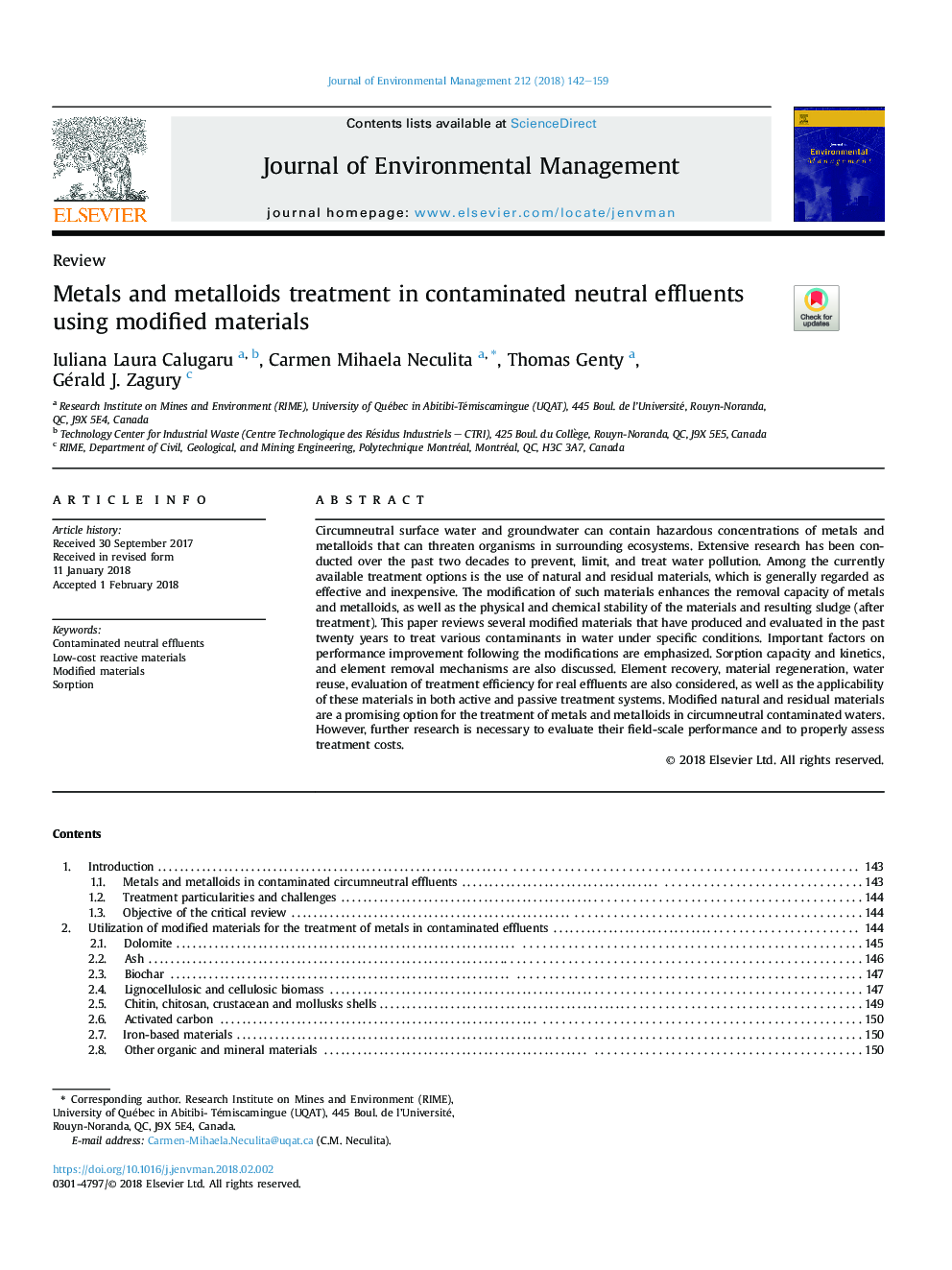| Article ID | Journal | Published Year | Pages | File Type |
|---|---|---|---|---|
| 7477957 | Journal of Environmental Management | 2018 | 18 Pages |
Abstract
Circumneutral surface water and groundwater can contain hazardous concentrations of metals and metalloids that can threaten organisms in surrounding ecosystems. Extensive research has been conducted over the past two decades to prevent, limit, and treat water pollution. Among the currently available treatment options is the use of natural and residual materials, which is generally regarded as effective and inexpensive. The modification of such materials enhances the removal capacity of metals and metalloids, as well as the physical and chemical stability of the materials and resulting sludge (after treatment). This paper reviews several modified materials that have produced and evaluated in the past twenty years to treat various contaminants in water under specific conditions. Important factors on performance improvement following the modifications are emphasized. Sorption capacity and kinetics, and element removal mechanisms are also discussed. Element recovery, material regeneration, water reuse, evaluation of treatment efficiency for real effluents are also considered, as well as the applicability of these materials in both active and passive treatment systems. Modified natural and residual materials are a promising option for the treatment of metals and metalloids in circumneutral contaminated waters. However, further research is necessary to evaluate their field-scale performance and to properly assess treatment costs.
Keywords
Related Topics
Physical Sciences and Engineering
Energy
Renewable Energy, Sustainability and the Environment
Authors
Iuliana Laura Calugaru, Carmen Mihaela Neculita, Thomas Genty, Gérald J. Zagury,
